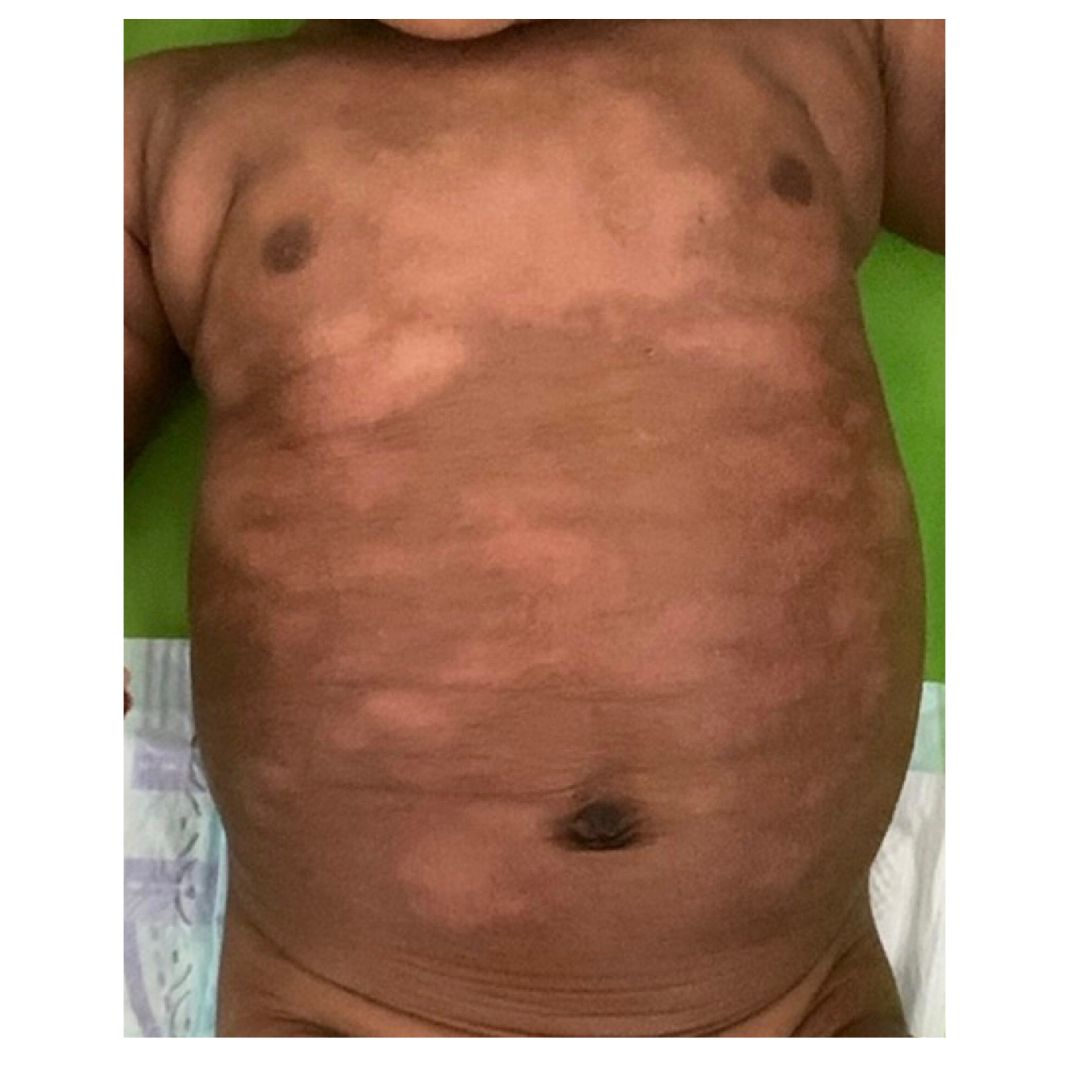
Eczema Made My Baby's Skin Discolored - What Can I Do?
After a significant eczema flare up or other inflammatory skin injury, you may begin to notice either lighter or darker patches left behind where dry, flaking skin once was. This is called post-inflammatory hypopigmentation (light spots) and post inflammatory hyperpigmentation (dark spots) and can be abbreviated as PIH.
- Why does it happen?
Among many factors, skin tone is primarily determined by the pigment melanin. That is, the more melanin your child's skin has, the darker your child's skin is. The color changes seen in PIH are a result of changes in the amount of melanin following inflammation, such as an eczema flare up (Staff, 2015).
Simply put, if your baby’s skin loses melanin after a bout of inflammation, they will have patches of skin that appear lighter than their overall skin tone. However, if your baby’s skin gain melanin, the patches will appear darker than their overall skin tone.
- Who is generally affected?
Even though PIH can occur in all skin types, it is more commonly seen in and presents with greater severity and intensity in individuals with skin of color (Dermatoses & Heath, 2019). Since the majority of what we know about eczema has been determined by studying its affects on white skin, healthcare providers and researchers are beginning to acknowledge and address these gaps to improve knowledge and care of eczema in people with skin of color (Nelson, 2022).

- What can be done?
Gentle Skin Care Routine – contrary to the common belief that PIH is caused by dirt and that scrubbing the skin really hard may help to remove it, abrasive skincare techniques on already-compromised skin, such as scrubbing, increases friction which potentially worsens the skin’s condition (Dermatoses & Heath, 2019). In addition to this, using a quality moisturizer can help to improve the appearance of the skin. We recommend our ‘Goodbye 2 Dry’ Dry Skin Relief or ‘Lotion 4 Little One’s' Daily Moisturizer.
Photoprotection – If patchy skin is a concern, the last thing you’d want to do is expose the skin to the sun which can further darken these areas. Practicing sun protection on a regular basis can help to minimize this. Some examples of this include applying broad-spectrum sunscreen, wearing sunhats or other protective clothing. Sunscreen should be reapplied every 2 hours and after children engage in water-based activities. These practices should be implemented whenever children will be playing in the sun, not just reserved for use on vacations. There is evidence that people with skin of color do not realize that they can be negatively impacted by sunrays and may not use sunscreen regularly as a result of this. Sunscreens that do not cast a white or grayish-blue hue onto the skin are suggested for children with skin of color who might be sensitive about their appearance after applying sunscreen (Dermatoses & Heath, 2019).
Skin Lightening Treatments – In treating PIH, it is always the most important step to treat the underlying condition that the PIH is a result of. Where some parents may wish for more options “due to the extent of involvement of the PIH, its psychological impact on the child, or adverse effect on the child’s quality of life”, skin lightening treatments may help. It is important to understand that these types of treatments may cause irritation that may lead to further dyspigmentation (Dermatoses & Heath, 2019).
We recommend discussing any of these options in full detail with your physician/pediatrician before trying any of them.
- When to Take a Trip to the Doctor’s Office?
If nothing seems to work to help even your child’s skin tone or if it takes longer than 6 months to resolve, it may be necessary to take a trip to the doctor’s office to revisit other treatment options that might be available and to give you a peace of mind.
Conclusion
PIH is directly related to the loss or gain of melanin, the pigment primarily responsible for skin tone. While the appearance of PIH can make a child sensitive about their appearance, it is most important to at first treat the underlying skin condition that is causing PIH. Even with the best management techniques, PIH may persist for several months to years. This does not mean you’re doing something wrong. In some cases, time is all that may be necessary for total resolve. For more challenging cases of PIH, it may be helpful to consult with a pediatric dermatologist as they have special expertise in treating pediatric and adolescent patients with skin of (Dermatoses & Heath, 2019).
References:
Dermatoses, U. I., & Heath, C. R. (2019). Managing postinflammatory hyperpigmentation in pediatric patients with skin of color. Cutis, 103, 71-73.
Nelson, S. (2022, September 28). The science of eczema on Brown and black skin. National Eczema Association. Retrieved April 13, 2023, from https://nationaleczema.org/blog/the-science-of-eczema-on-darker-skin/
Staff, S. K. (2015, May 6). AboutKidsHealth. Retrieved April 13, 2023, from https://www.aboutkidshealth.ca/article?contentid=2299&language=english
